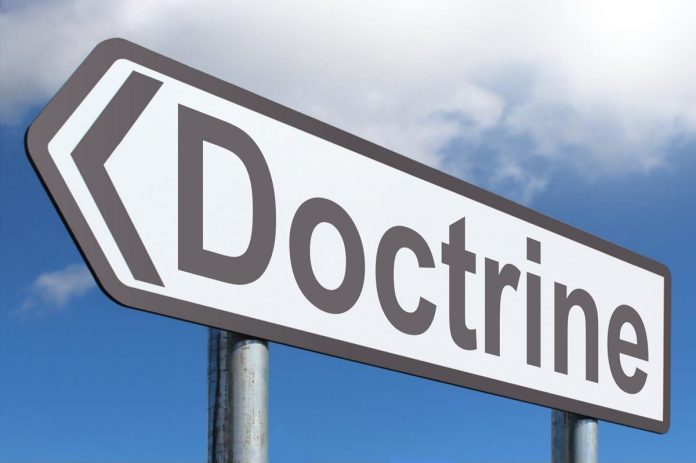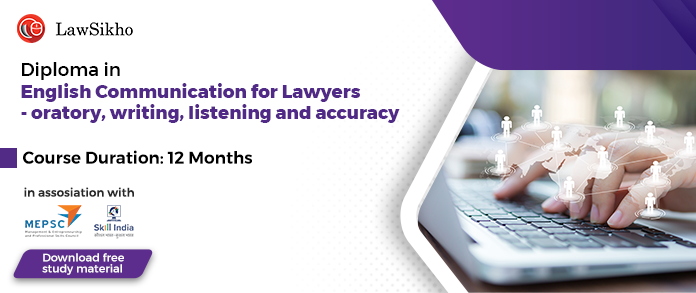This article has been written by Oishika Banerji of Amity Law School, Kolkata. It discusses the cy pres doctrine which is applied by the courts to rescue a legal document difficult to impose. This is done by changing the document ‘as close as feasible’ to the original intent of the same. The article also discusses the doctrine with respect to the United States, the United Kingdom, and India.
This article has been published by Sneha Mahawar.
Table of Contents
Introduction
The cy pres doctrine is a legal notion that empowers courts to interpret the provisions of a will, gift, inheritance, or charitable trust. If there are problems carrying out the original document’s intended desires or conditions, or if they can’t be lawfully constructed or legally implemented, this doctrine kicks in. Once in force, it allows the court to interpret the donor’s or testator’s intent and carry out their desires. This article helps the readers understand the doctrine of cy pres in light of the United States, the United Kingdom, and India.
What is the cy pres doctrine
The term ‘cy pres’ comes from the old French phrase ‘cy pres comme possible’, which means “as near as possible.” In the legal sphere, the phrase refers to ensuring that a donor’s or testator’s desires are followed out as nearly as possible, whether in a will or as part of a charitable trust or estate. When legal complications occur that make it impossible to distribute cash for any reason, the instrument or trust may become null and invalid. For example, if a charity goes bankrupt and is unable to function or meet its goals, legal action may be required. The cy pres doctrine can be used by courts to prevent it from ‘failing.’ The cy pres concept allows courts to develop their own interpretations to guarantee that a donor’s, charity trust’s, estate’s, or will’s wishes are followed out as precisely as possible, even if some revisions are required. In the case of a charity, for example, the Internal Revenue Service (IRS) specifies that a court might “substitute another benevolent aim that is judged to approximate the original charitable purpose as nearly as practicable.”
An illustrative example of the doctrine’s application
The Massachusetts Supreme Judicial Court decision in Jackson vs. Phillips (1967) is a notable example of the application of the cy pres doctrine. In this case, the testator, Francis Jackson, had established a trust to “generate a public feeling that would put an end to dark-skinned slavery in this nation”. The Thirteenth Amendment of the United States Constitution ended slaver, rendering the trust’s declared purpose null and void. The Court disagreed, using cy-près and holding that Jackson’s objective would be best achieved by utilizing the trust “to promote the education, support, and interests of the freedmen, recently slaves, in those states in which slavery had been thus abolished.”
Purpose of the cy pres doctrine
- The cy pres doctrine is a legal theory that courts use to prevent a charity trust from failing when a philanthropic purpose is impossible or impractical to achieve at the outset or afterwards.
- Rather than nullifying the charitable donation, the court might choose a new beneficiary who closely matches the donor’s original purpose. For example, if a deceased formed a trust with the purpose that the remaining trust funds must go to a specific charity that no longer exists after the death of their last living relative, the court may transfer the funds to a similar organisation that satisfies the decedent’s general philanthropic aim.
- The cy pres concept has also been used in the distribution of class action settlement awards if the money goes unclaimed or it is not cost-effective to distribute the cash to each individual class member. A beneficiary, such as a charity organisation, may be approved by the court in such instances.
Conditions for the doctrine of cy pres
The following are the requirements for the Cypres Doctrine:-
- It must be difficult to actually carry out a donor’s goal with the literal meaning.
- The donor must have had a strong desire to help others.
- The new goal with which the property will be attached must be as close in nature as feasible to the settler’s specific goal, but it must be impossible to implement.
Understanding the cy pres doctrine in light of the United Kingdom
The cy-pres doctrine is a part of English trusts law that deals with charitable trusts. The doctrine states that if a trust fails because its aims are impossible or cannot be met, the High Court of Justice or the Charity Commission can issue an order allocating the trust’s money to the next best use. The trustees (by a two-thirds majority) may decide to redirect the trust’s finances towards charity with a value of less than £5,000 and no land. The idea originated in ecclesiastical law, derived from the Norman French cy près comme possible (as near as possible), although similar and potentially ancestor principles have been discovered in Roman law, both in the Corpus Juris Civilis and subsequent Byzantine law.
English laws governing the cy pres doctrine
Prior to the Charities Act of 1960, the cy-pres concept only applied in instances when the trust’s aim was either unattainable or impractical. However, Section 13(1) of the 1960 Act (part of the now-repealed Charities Act 1993) states that cy-près can apply if certain original intentions are present. The Charities Act of 2006 changed this phrase to “the appropriate reasons,” which are described as “(on the one hand) the spirit of the donation concerned, and (on the other hand) the social and economic conditions existing at the time of the proposed revision of the original aims.”
In the event of extremely small charitable trusts (those with annual revenue of less than £5,000 and no land), the trustees can agree to transfer the property to another charity with a two-thirds majority vote, bypassing the High Court and the Commission. Sections 74 and 75 of the 1993 Act lays down this information. Once a decision has been made, the public must be notified along with the Commission. Currently, the Charities Act of 2011 deals with the cy-près doctrine.
Cy pres doctrine in the United States
A Uniform Trust Code (UTC exists in the United States, which is a model code that various jurisdictions (e.g., states) may adopt by statute. According to the UTC, cy-près only applies to charity trusts if the trust’s original specific purpose has become impractical or unworkable, and the trust’s articles do not indicate what should happen in such a case. According to the UTC, if a specific charity objective becomes illegal, unworkable, impossible to fulfil, or wasteful, the court may use cy-près to alter or terminate the trust in a way compatible with the settlor’s philanthropic goals. The UTC further states that the court may not utilise cy-près if “a provision in the provisions of a charity trust would result in distribution of the trust property to a non-charitable beneficiary.” Along with this, cy-près may not be used to circumvent the rule against perpetuities. For non-charitable trusts, the UTC states that the court may alter or terminate the administrative or dispositive conditions of a trust if, due to circumstances not foreseen by the settlor, change or termination will serve the trust’s aims.
The take of American courts on cy pres doctrine
American courts followed the California Supreme Court’s endorsement of cy-près processes in class action settlements in 1986. Instead of reverting to a defendant, cy-près procedures allow money to be utilised to promote the interests of class members, which might be perceived as a windfall for a defendant accused of breaching the law. The word is a misnomer in the context of class actions, according to Judge Richard Posner, because cy-près judgments have a punitive consequence. The American Law Institute’s Draft of the Principles of the Law of Aggregate Litigation proposed limiting cy-près to “circumstances in which direct distribution to individual class members is not economically feasible, or where funds remain after class members are given a full opportunity to make a claim“.
The US Supreme Court decided in 2014 to hear an appeal of the Ninth Circuit decision in Google Referrer Header Privacy Litigation, 10-cv-04809, U.S. District Court, Northern District of California (San Jose), which allowed a class action settlement that awarded $2 million to the plaintiffs’ attorneys, $5,000 to each of the handful of named plaintiffs, and no monetary award to an estimated 129 million class members, citing the cy-près doctrine to give a handful of privacy groups (including all three plaintiffs’ attorneys’ alma maters and several groups already supported by defendant Google) a share of $6 million rather than any monetary award to class members who would receive approximately four cents each. The case of Frank vs. Gaos (2018) had allegedly claimed that the award was not “fair, reasonable, and sufficient” as required by Rule 23(e)(2) of the Federal Rules of Civil Procedure. The Supreme Court did not rule on the case’s merits, instead remanding it to the Ninth Circuit for a determination of the plaintiffs’ standing.
Cy pres doctrine in India : an insight
Under Section 92 of the Code of Civil Procedure, 1908, the Court of the District Judge has the power to administer public charities. Sub-section (3) of Section 92 embodies the doctrine of cy pres. This provision was taken from Section 13 of the Charities Act of England of 1960. Even before the adoption of sub-section (3), Indian courts had the authority to apply the cy pres concept to public trusts under England’s law. Sub-section (3) effectively broadens the scope of when the property can be used by pres. This establishes the conditions under which a charity or religious trust’s ‘original intentions’ can be changed and the property utilised cy pres. Mergers of many organisations are also allowed under sub-section (3). This provision provides the most significant modification of the old cy pres norm, and will likely be of the most practical utility in allowing money to be used for the greatest public advantage.
Before the addition of sub-section (3), the cy pres doctrine could only be used if carrying out the trust’s aim was ‘difficult or impracticable.’ This requirement, despite the fact that the word ‘impossible’ was widely interpreted, created a number of problems; for example, nothing could be done in cases where the continued administration of the trust was highly inconvenient but not ‘impossible’, or where an old charity served no useful purpose in modern times, perhaps due to changes in societal needs or the value of money. The Chantries Act of 1960 (parts 13 and 14 in England) and Section 92(3) in India modernised the whole matter surrounding the cy pres doctrine.
All you need to know about Section 92 of the Civil Procedure Code, 1908
Section 92 of the Code of Civil Procedure, 1908 provides that in one or more of the following circumstances, the court may alter an express or constructive trust created for a public purpose of a charitable or religious nature and allow the trust’s property or income, or any portion thereof, to be applied cy pres:
- Where the original purpose of the trust has been accomplished in whole or in part, or where the original purpose of the trust cannot be carried out at all or according to the guidelines given in the trust instrument.
- When the trust’s original purpose is used for a portion made available by virtue of the trust.
- Where the original intention was put out in whole or in part.
- Have been well-provided for by other means.
- Stopped being a waste of time or a danger to the community.
- Stop providing an appropriate and effective technique of exploiting the property in any other way.
Indian judiciary’s take on the cy pres doctrine
Over the years, the Indian judiciary has been of the clarified view that since the notion of cy-pres has its origins in equity, it has a broad scope and is applied liberally, however, there are certain limitations. Courts have opined that the doctrine of cy pres is resorted not only for the initial use of the sum given to charity but also for the continuing application of any surplus of capital or revenue. The cy-pres rule is in line with Hindu Shastra principles and has been applied to charitable offerings by Hindus. These thoughts and opinions are very well reflected in precedent judgments discussed hereunder.
State v. Man Singh and Others (1974)
Tara Chand Saraf who lived in Peshawar many years ago had a jeweller’s shop, as it appeared before the Delhi High Court in the present case of State v. Man Singh and Others (1974). He didn’t have any children. He had created a will and had it recorded on December 20, 1927. The original will has been lost or is no longer traceable or procurable. Mr. Partap Singh, one of the current trustees of the trust established by that bequest, has approved the aforementioned facts before the High Court. He claimed that he had travelled to Peshawar in 1964 and attempted unsuccessfully to locate the original will. He further claimed that he was informed that the will’s records in the Peshawar Sub-office Registrar’s had been burned.
Delhi High Court’s decision
The Delhi High Court had noted that in light of the present case, there is no question that the testator had a broad benevolent aim that extended beyond the specific forms of application that he established. Everything in the will, with the exception of the statement that he has no children, leads to it. A performance like this was thought to indicate a desire to give to the general public. The key guideline to follow while applying the notion of cy-pres is that the donor’s purpose must be followed as closely as feasible. The trustees must therefore follow the concept of cy-pres and accomplish what is as near as possible to the intention of the testator. In light of this observation, the Court ordered that the funds in the hands of the trustees must be allotted to public welfare purposes.
Abid Hatim Merchant v. Janab Salebhai Saheb Shaifuddin (2000)
The question before the Apex Court in the current Civil Appeal against the Bombay High Court judgment is whether the avowed object with which Sir Adamji Peerbhoy, the great Philanthropist, founded the trust for the Dawoodi Bohra Community in 1883 A.D. requires a change of object under cypres doctrine with regard to constitutional parameters in order to make the Trust truly secular in nature, since the situation in the early nineteenth century may not suit the purpose in the 21st century. The respondent Trust argued that the Constitution’s Preamble declares India to be secular and that what was possible in 1883 may not be proper or in line with the Indian Constitution’s lofty ideas, because the constitutional mandate is to be obeyed in its observance rather than in its violation, and it is this concept that prompted the Trustees of Sir Adamji Peerbhoy Sanatorium Trust to petition the High Court for variation and amendment to the scheme of the Trust as sanctioned by the Court in 1931.
Apex Court’s opinions
It is to be noted that the use of the courts’ ordinary jurisdiction to manage a charitable trust whose particular form of application has not been indicted by the donor, results in a cy-pres application. Where he has prescribed a particular mode of application that is incapable of being carried out, but he had a charitable intention that was greater than the particular mode of application prescribed, the court can carry out the charitable intention as if the particular direction had not been expressed at all.
Further, the most important thing to remember while using the cy-pres concept is to follow the donor’s purpose as closely as possible. As a result, if the donor selects a specific item capable of taking effect, any subsequent application for cy-pres must be limited to the scope of that object, and the manner of application must, as much as possible, correspond to his intentions. If no other object with a closer link can be located, a charity may cy-pres to the original object, even if it appears to have no similarity to it, however things closer to the donors purpose will always be picked in preference to those more distant. The Apex Court in light to the facts of the present case has opined that necessary changes in the object of the Trust should be carried out to eliminate hindrance in its application.
Kaliamurthy v. Thangamani and Others (2011)
In the present case of Kaliamurthy v. Thangamani and Others (2011), the appellant, Kuppammal, gifted an immovable property consisting of two mahs of wetland located at Akaraivatham to her son Veerappa Vanniyar in an authentic deed with the condition that the donee must feed 50 pilgrims in the Tamil months of Chitrai and Karthikai at the Madam consecrated by her in Tiruvannamalai, and her daughter, Veerayee, had also agreed to the above-mentioned condition. According to the appellant (Veerappa Vanniyar), he has no knowledge of whether the above-mentioned arrangement has been finalised or not. He also claims that after Veerappa Vanniyar died, his son Arunachala Vanniyar stepped into his shoes and conducted the Annathanam, and that one Ganapathi Vanniar filed a suit in Karaikal against Arunachala Vanniyar, claiming that the charity established by Kuppammal had been in existence and demanded the partition of his half share in the property set aside for the charity as Kuppammal’s legal heir.
The above-mentioned suit was dismissed by the lower court on April 26, 1957, and Ganapathi Vanniar filed an appeal challenging it. It is stated that the appeal filed by him was dismissed, confirming the lower court’s judgment and decree, and it is also stated that by way of the judgment rendered, the appellate court expressly removed the element of trust or endowment in the donation of Kuppammal and further admitted that Arunachala Vanniar was the donor. It is stated that Arunachala Vanniar left a Notarial will dated 18.12.1968 and the will stipulates that Arunachala Vanniar’s daughter Kunjammal shall take possession of the house with limited right of enjoyment during her lifetime and allow free entry to the other daughters, and Kunjammal’s sons Thangamani Vanniar and Narayana Vanniar shall continue to have the enjoyment of the property by executing certain charities.
The Madras High Court’s decision
In this notable case, the Madras High Court had opined that it’s interfering with the trial court’s verdict and the decree has been proposed for no good cause. The trial court was deemed to have appropriately analysed and appreciated the information on record in the right context, both factually and legally, and correctly denied the appellant’s relief while correctly granting the respondent’s relief. In view of the foregoing, the Court held that the appellant was not entitled to a declaration of administration of the suit properties on the doctrine of cy pres pursuant to Arunachala Vanniar’s will dated 18.12.1968. The Court also believed that the respondent has the right to split and separate ownership of half of the action.
V. G. Bhoopathi v. Adhi Lakshmi Ammal Dharma Chathiram (2017)
During her lifetime, one Adhilakshmi Ammal built a free Choultry called ‘Adilakshmi Ammal Dharma Chathiram’ in Thirukazhukundram Village, which has offered free lodging for the poor since 1890. She spent around Rs.10,000 renovating it during her lifetime and also had put Rs.1,500 in M/s Arbuthnot and Co, Madras. On 02.10.1900, she signed a trust deed and had it registered. The Trustees were required by the Trust Deed to maintain the Choultry, keep it lighted with lamps (Deepam), give shelter, and provide water to pilgrims from the interest earned on the fixed deposit. Devaraja Mudaliar, Adilakshmi Ammal’s foster son, was named the first Trustee by Adilakshmi Ammal.
To keep the Choultry going after his death, he named his son-in-law Gajaraja Mudaliar as Executor of the Will and gave him permission to rent out a section of the Choultry to generate cash and continue the charity. As a result, Gajaraja Mudaliar was in charge of the property till his death. Padmavathi Ammal, the wife of Gajaraja Mudalia, died before her husband, leaving her son Srinivasan and daughter Kamalabai Ammal. Srinivasan had gone missing and had not been heard from since. Kamalabai Ammal died on January 5, 2004, leaving behind two boys and two daughters. Dhanalakshmi Ammal, Gajaraja Mudliar’s junior wife, bore him two sons and three daughters. The present conflict was between his daughter from his first marriage and his sons from his second marriage.
Observation by the Madras High Court
In the circumstances, it is clear that the trust’s objective cannot be carried out in accordance with the orders set forth in document Ex.A-2 that established the trust. As “parens patriae,” the Court has the responsibility to protect trust property that has been caught between persons who have illegally transferred trust property and persons who are not truly interested in the trust and have never discharged the trust’s responsibility or relinquished the right of trusteeship by implication. As a result, it is critical to follow the Cypres Doctrine as outlined in Section 92 (3) of the Code of Civil Procedure, 1908.
M. Murali Krishna Goud v. the State Of Andhra Pradesh (2020)
The petitioners (M. Murali Krishna Goud) in the present case of M. Murali Krishna Goud v. the State of Andhra Pradesh (2020) seek a writ of mandamus declaring the respondents’ actions in not relocating the office of the Sub-Registrar, Dhone, Kurnool District from an old and dilapidated building to a new building constructed on the plots gifted by the petitioners in S.No.321 and, on the other hand, proposing to use the new building for a purpose other than that for which the plots were gifted as illegal, arbitrary, contrary to law.
Observations by the Andhra Pradesh High Court
The Andhra Pradesh High Court in light to the present case had observed the following two instances in which the cy pres doctrine is applicable:
- When a testator had a broad philanthropic purpose, but the goal of charity turned out to be impossible or there remained extra money after the trust was fulfilled, the cy pres doctrine applies. In such cases, the court may order that the entire fund or the excess, as the case may be, be applied to another charity in a manner that is as close to the testator’s purpose as possible. For example, a person may write a will specifying that the assets left over after his death be used to establish a trust for the eradication of a disease that was prevalent at the time of the will’s execution. However, if that disease has already become extinct by the time he dies and the will comes into effect, the trustees may apply to the appropriate court for the direction that the legacy be used for any other purpose that is closer to the original intention of the testator, and the court, having regard to the fact that the object of the trust has already been fulfilled in its natural course, may apply the doctrine of cy pres and treat the testator’s general intention as if he died today.
- Another scenario in which this doctrine might be used is if, after eliminating the sickness by spending the legacy, the trustees petition to the court for appropriate directions, and the court can use this doctrine to direct them to use the rest of the funds for any other charitable purpose. It is important to remember that this idea only applies to wills, not deeds.
Thus the jurisprudence above demonstrates that the theory of cy pres applies to universal charitable donations for public purposes. However, it appears that its applicability is restricted in the situation of conditional donations provided for a specified purpose. In such circumstances, the theory applies if excess remains after the condition is met. This theory, however, does not apply where the donee has breached an antecedent or subsequent condition. The facts must be examined in light of the preceding legislation. The Court opined that it is also worth noting that, because the gifts in question are conditional, the notion of cy pres does not apply to them. Authorization to use the concerned building for any purpose other than housing the Sub-office Registrar’s and its affiliated enterprises is not allowed. The counterclaims that the Sub-Registrar Office was not relocated because authorization had not yet been granted are nothing more than truancy on the part of the respondents. When the public is suffering due to a lack of quality and safe premises in which to undertake registration transactions, the authorities cannot behave carelessly and deprive the public of their constitutional right.
Conclusion
As we come to the end of this article, it is worth noting that the legal doctrine of cy pres comes as a saviour for unenforceable legal documents by showering relief on them thereby making it feasible for them to function and fulfil their purpose.
References
- https://www.law.cornell.edu/wex/cy_pres_charitable_trusts
- https://uk.practicallaw.thomsonreuters.com/0-500-8595?transitionType=Default&contextData=(sc.Default)
- https://www.jstor.org/stable/1063541
- https://www.investopedia.com/terms/c/cy-pres-doctrine.asp
Students of Lawsikho courses regularly produce writing assignments and work on practical exercises as a part of their coursework and develop themselves in real-life practical skills.
LawSikho has created a telegram group for exchanging legal knowledge, referrals, and various opportunities. You can click on this link and join:
Follow us on Instagram and subscribe to our YouTube channel for more amazing legal content.
 Serato DJ Crack 2025Serato DJ PRO Crack
Serato DJ Crack 2025Serato DJ PRO Crack











 Allow notifications
Allow notifications



